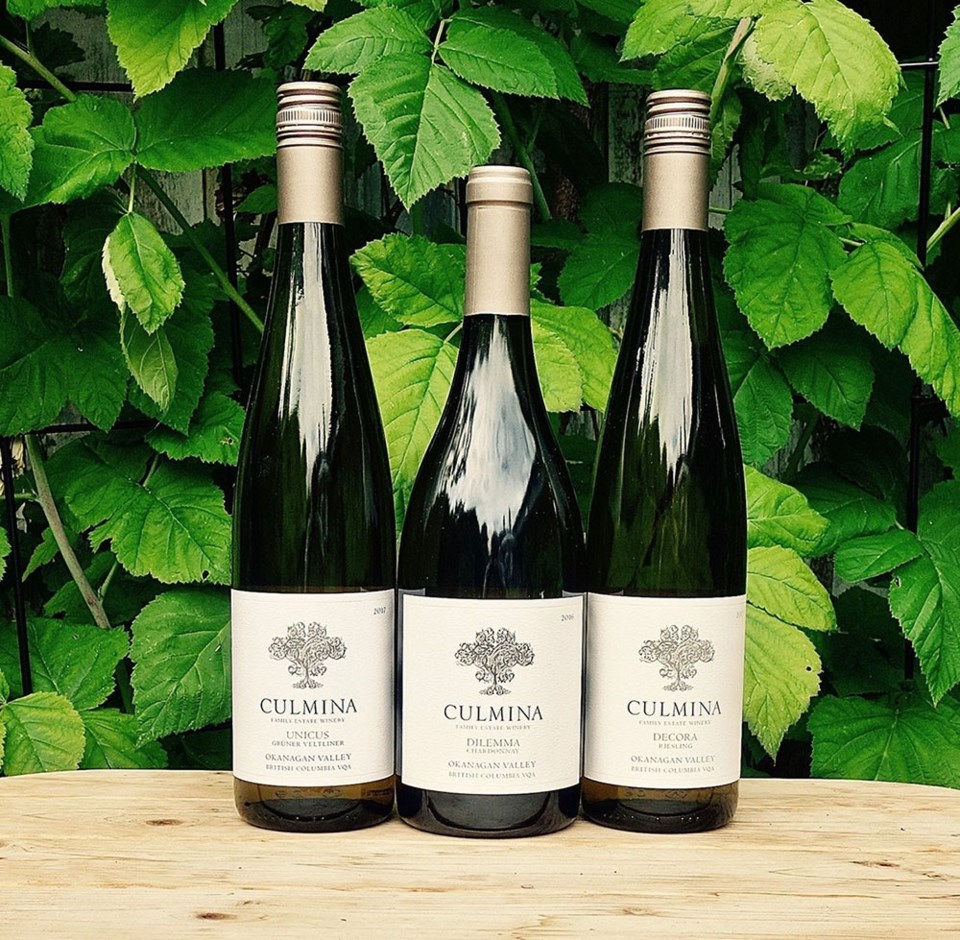Along the Golden Mile between Osoyoos and Oliver in the southern Okanagan, is a golden opportunity to enjoy the fruits of one of Canada’s pioneers in the wine industry. Don Triggs was behind the Jackson-Triggs goliath. Now in ‘retirement,' he is now the co-CEO of the boutique winery, Culmina.
All of Culmina’s premium wines are given personal names. As Triggs explained, “We gave a lot of our wines names because they’re special to us. 'Unicus' is uniqueness, one of a kind.”
Produced from Gruner Veltliner (GV), one of Austria’s premium grapes, the 2018 Culmina Unicus ($27) is fermented in steel, concrete egg, and concrete egg amphora. With its aromatic bouquet of grapefruit and lemon and a delicious citrus flavour, it’s very dry. Triggs says the GV works really well with green vegetables, spicy food and they get a lot of support from local chefs. Available at fine restaurants, the tasting room, and to wine club members.
Culmina’s Decora means pretty or decorated. Made of 100-per-cent Riesling, Decora has an enchanting character of apples and peaches. And it’s regarded as one of the best white wines for its ability to go with so many foods.
Triggs says site selection is really important to grow premium Riesling. “You’ve got to have the right site, a cool site.”
Triggs describes his 2017 Decora ($21) as “crisp with racy acidity and ample fruit,” along with “wet stone; that’s the soil talking.” As for pairing with food, Triggs recommends, “It’s wonderful with oysters. If you go to Rodney's Oyster Bar in Vancouver, he’s got it on his list.”
Culmina’s 2016 Dilemma Chardonnay ($31) is named when Triggs was forced to rip out 18-year old Chardonnay vines that had been planted by the previous owner. Unfortunately, the lower elevation was too warm for Chardonnay. New Chardonnay was planted at Margaret Bench, higher up and a cooler site. But of course, it would take lots of money, time and effort and waiting several years for the grapes to be mature enough to make quality wine.
The Chard is fermented in 35-per-cent new French oak, 30-per-cent 1-year-old oak, and 30-per-cent stainless steel which lets the fruit dominate and the wood play a more subtle role. Triggs describes the process further, “We did a 30-per-cent malolactic fermentation which produces less butter flavour but more acid.” It’s the acid that gives a wine life and vitality and makes it very food friendly.
“We also have a wild ferment (Stands Bench); we’re trying to let the land talk. You’re at the mercy of nature. Sometimes you have a stopped fermentation. It’s not as reliable. If you put the two Chardonnays side by side, 70 per cent of the consumers prefer the Stands. The wild ferment has a different layer of complexity,” says Triggs.
“We’re moving slowly to more wild ferments in some of our wines. Definitely in our Chardonnay and the Gruner which knocked our socks off. We may try it on the Riesling, a couple of barrels and see what happens. I believe in experimenting in small amounts and when it works, then expand it. Never bet the ranch!” admits Triggs.



